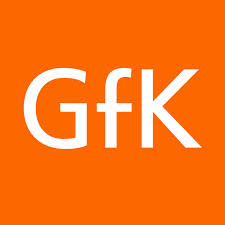 Opportunity and risk in the photographic market
Opportunity and risk in the photographic market
Nuremberg, 2 December 2013 – The international photographic sector will convene for the fifteenth time in Nuremberg on 2 and 3 December. Around 150 well-known retail, industry and press representatives will meet at the Imaging Summit to discuss the opportunities and risks to be found in the photographic market. The Japanese photo market in particular is considered an indicator for global trends. However, the experts all already agree on one point: images are the number one means of communication worldwide.
Global development in the imaging market has been strongly influenced by smartphones, particularly as a result of technical improvements in the field of videography. Many consumers now use their smartphone to take pictures and film videos spontaneously, and then share them with friends on social media platforms. This applies most of all to the younger generation. Certain market segments in the digital camera industry around the world have suffered a major slump as a result. One product range to feel the effects has been the compact camera, the technical features of which are comparable to those of a smartphone.
However, one side-effect of this that should not be underestimated is that smartphones with built-in cameras have caused a greater number of young consumers to become acquainted with the concept of photography. They also then increasingly go on to buy high-quality products. GfK is seeing significant growth worldwide in sales of cameras with an interchangeable lens, such as single-lens reflex cameras and compact system cameras. A rise has also been observed in compact cameras, which display images in high quality and come equipped with a wide-reaching zoom function as well as an image sensor.
Often the forerunner for global technological trends, increases are currently being reported in Japan not just in the high-tech top segments of the SLR market, but also in very low-price, entry-level compact cameras and the lower-price SLR camera segments. Depending on consumer type and the devices already owned, there is major sales potential in this area. Japan is also an example of this: sales of single-lens reflex cameras increased by 35 percent year-on-year in the period from January to October 2013. In relation to this, sales of interchangeable lenses increased by a total of 34 percent. These developments not only support sales in Japan, but also around the world, both in specialist photography stores and online.
Image communication is not just changing because of smartphones: cameras’ WiFi capability has also played a major part. This feature allows data to be communicated quickly, which firmly establishes photographs as the number one means of communication.
Imaging Summit
The Imaging Summit is a collaborative event between GfK and photokina organizers Koelnmesse and The Imaging Association (Photoindustrie-Verband). Since 1983, representatives from industry and retail have been meeting every two years to discover and exchange information on international data and trends in the imaging segment. The Imaging Summit 2013 will take place on 2-3 December at the Museum für Kommunikation (Communication Museum) in Nuremberg.
Further information can be found on the website http://www.gfk.com/Imaging-Summit-2013
Follow the Imaging Summit on Twitter: #ImagingSummit
About GfK
GfK is one of the world’s largest research companies, with around 13,000 experts working to discover new insights into the way people live, think and shop, in over 100 markets, every day. GfK is constantly innovating and using the latest technologies and the smartest methodologies to give its clients the clearest understanding of the most important people in the world: their customers. In 2012, GfK’s sales amounted to €1.51 billion.
To find out more, visit www.gfk.com
